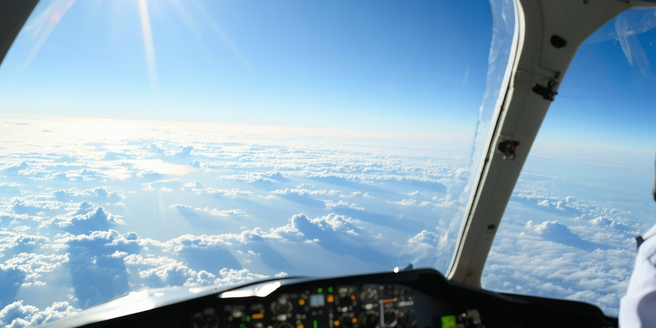
Understanding Wind Currents and Their Impact on Flight
Wind currents significantly affect aircraft performance during flight. Pilots rely on understanding these atmospheric movements to optimize routes, enhance fuel efficiency, and ensure passenger safety. On the ground, weather forecasts play a crucial role in determining flight schedules and routes to minimize delays. Notably, tailwinds can accelerate a plane’s speed, reducing flight time and saving fuel, while headwinds may require additional fuel consumption and strategic route planning. Crosswinds, meanwhile, present unique landing challenges, demanding skilled maneuvering to maintain aircraft stability. The dynamic nature of wind currents necessitates real-time monitoring and adaptation by pilots and air traffic controllers. Grasping how these forces interact with an aircraft’s aerodynamics underscores the complex, yet fascinating symbiosis between nature and aviation technology.
How Airplane Windows Enhance Passenger Comfort
Airplane windows play a pivotal role in passenger comfort, offering more than just a view of the clouds. They are engineered to absorb the impact of pressure differences between the cabin and the outside atmosphere, crucial for maintaining structural integrity at high altitudes. The design features multiple layers of materials, including a special coating to filter out harmful UV rays, protecting passengers from excessive sunlight during long flights. Beyond safety, windows contribute to a more pleasant travel experience by reducing noise pollution from the engine and improving cabin acoustics. The strategic positioning of windows aligns with seating arrangements to enhance personal space, allowing passengers to enjoy natural light without glare. As a result, airplane windows not only ensure safety but also elevate comfort, making them an essential component of modern aircraft.
Design and Functionality of Airplane Windows
The design and functionality of airplane windows are anchored in safety and efficiency. Constructed with robust materials like layered acrylic or polycarbonate, they withstand intense atmospheric pressure changes. Each window typically consists of three panes, with the outer layer bearing the brunt of external forces, while the middle pane is equipped with a tiny breather hole to equalize pressure. The inner pane, mostly for passengers’ protection, remains warm and condensation-free. This multi-layer architecture also insulates noise, ensuring a quieter cabin environment. Furthermore, windows are strategically spaced along the aircraft body to align with passenger seating, maximizing viewing pleasure and even lighting. As part of an aircraft’s structural design, they contribute to aerodynamic efficiency, seamlessly blending functionality with the comfort of modern air travel.
The Role of Wind Currents in Airplane Navigation
Wind currents are integral to the navigation and operation of aircraft. By harnessing these natural forces, pilots can significantly enhance flight efficiency and reliability. Favorable tailwinds reduce travel time and fuel usage, while understanding headwinds and crosswinds helps in selecting optimal ascent and descent paths. Navigational systems are attuned to real-time wind data, adjusting altitude and direction to maintain desired speeds and fuel efficiency. Pilots must constantly evaluate wind conditions during flight, especially when approaching airports where precision in handling crosswinds is critical. Air navigation is thus an intricate balance of using wind patterns to an aircraft’s advantage while ensuring passenger safety and comfort. The ability to read and respond to wind currents exemplifies the combination of natural science and advanced technology in aviation.
Safety Considerations for Airplane Windows and Wind Forces
Ensuring the safety of airplane windows against powerful wind forces involves meticulous design and engineering. Windows must endure significant stress, particularly during takeoff and landing, where wind shear presents potential challenges. They are manufactured using advanced materials and reinforced with multiple layers for durability and resilience. Moreover, rigorous testing simulates extreme conditions to validate their safety in operation. Wind-induced turbulence requires windows that can withstand sudden pressure shifts without compromising the cabin’s integrity. The continuous monitoring of window health and maintenance ensures they remain fit for service over time. Additionally, innovations in sensor technology now enable real-time monitoring of window stress levels, alerting the crew to potential vulnerabilities. This proactive approach underscores aviation’s commitment to passenger safety amidst the dynamic forces of wind during flight.
Future Innovations in Airplane Window Technology
As technology advances, the future of airplane windows promises exciting innovations that enhance both functionality and passenger experience. Upcoming designs focus on transparency regulation, allowing passengers to adjust tint levels for optimal visibility and comfort. Smart windows embedded with organic light-emitting diodes (OLEDs) are in development for personalized multimedia displays, transforming viewing options during flights. Additionally, advances in material science will enable windows to become lighter yet stronger, improving fuel efficiency by reducing aircraft weight. Self-healing materials are also gaining traction, with nanoparticles designed to repair minor scratches autonomously. Environmentally, future windows aim for higher energy efficiency by incorporating solar technologies to harness sunlight to power onboard systems. These advancements signal a future where airplane windows are more than passive features, integrating cutting-edge technology to redefine air travel.
